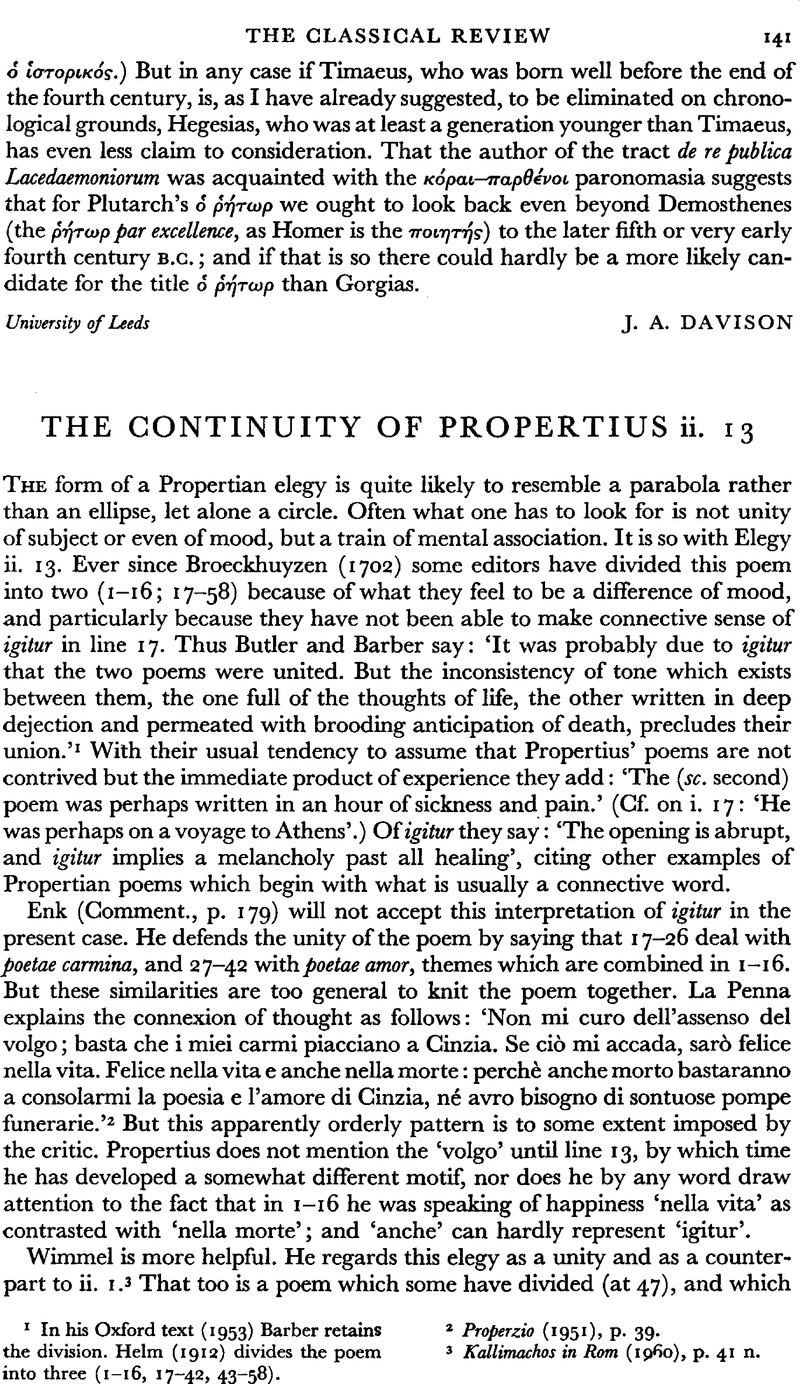No CrossRef data available.
Article contents
The continuity of Propertius ii. 13
Published online by Cambridge University Press: 27 February 2009
Abstract

- Type
- Review Article
- Information
- Copyright
- Copyright © The Classical Association 1966
References
page 141 note 1 In his Oxford text (1953) Barber retains the division. Helm (1912) divides the poem into three (1–16, 17–42, 43–58).
page 141 note 2 Properzio (1951), P. 39.Google Scholar
page 141 note 3 Kallimachos in Rom (1960), p. 41 n.
page 142 note 1 Ibid., p. 17.
page 142 note 2 Enk does not mention Callimachus in his argument for the unity of the elegy, Latomus xv (1965), pp. 186–190, and Commentary(1960).Google Scholar
page 143 note 1 The corresponding objective symbol for the poetry advocated by this school is the pure water that the Melissae draw for Deo at the end of Callimachus' second Hymn.
page 143 note 2 Am. ii. 1. 11–22.
page 143 note 3 magni Camps, magna MSS. I take tres, with Mr. Camps, to mean ‘two or three’, ‘a very few’ (cf. uerbis tribus, Ov. P. iv. 3. 26), and maxima to mean ‘all my …’ (cf. iv. 1. 10). See his edn. of Book ii.
page 143 note 4 Some feel that the break occurs four lines later, which at least shows that Propertius has managed a transition. But although 43–50 are an abrupt parenthesis, 39–42 seem closer to 51–58 than to what precedes them.


